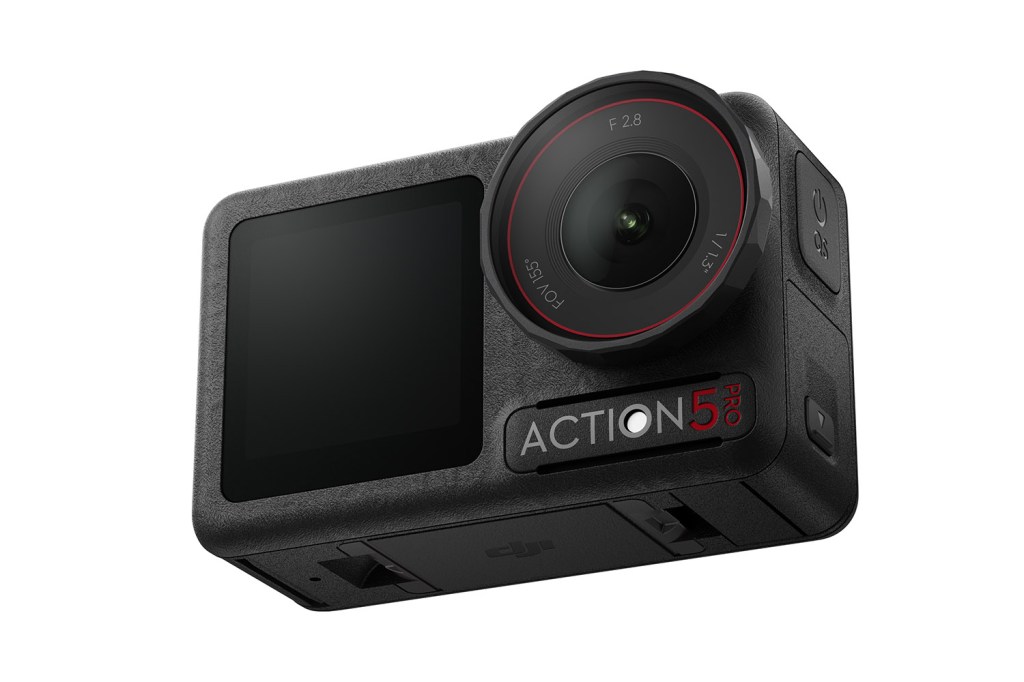Apple released the spanking new iPhone 17 series over a month ago now. Where does the time go? Typically, when new smartphones come out, reviewers will test one, maybe two of the models. But I’ve been doing something a little different.
Since the devices came out, I’ve been using all of them: the iPhone 17, 17 Pro, 17 Pro Max, and iPhone Air. Now, I’ve made sure I’ve spent at least a week using each one as my main device. But I’ve also taken two phones out with me to see which lasts longer, used one for photos while the other is used for everything else, and all manner of other tests. I’ve put these phones through the ringer.
The base model iPhone 17 seemed like the best buy thanks to all its tasty upgrades. While the Pro models went pro-ier than ever before. And the iPhone Air seemed to be the pick for those that want a pretty phone. But how did these initial impressions stand up after using the devices for a month? Here’s what you need to know, and which you should pick.
iPhone 17: a base-model iPhone I can finally use

I’ll admit it straight away: for years I’ve written off the base iPhone. It’s usually the one you recommend to your nan or someone who wants to spend the least amount of money on a new iPhone. But the iPhone 17 genuinely surprised me.
The real game-changer is the 120Hz ProMotion display, and it’s about bloody time. Apple’s held out for far too long, acting like smooth scrolling was some sort of Pro-exclusive feature. Using the iPhone 17 now feels slick, fluid, and – dare I say it – actually enjoyable. I went back to my iPhone 16 to compare something, and it felt like stepping into the past. Even more than before.
There’s also the screen size bump. At 6.3-inches, it’s slightly larger and sits in a sweet spot. I think its big enough to watch a quick YouTube video, but small enough that your hands don’t cramp after using it for long periods of time. The brightness? Ridiculously good. 3000 nits in sunlight, which matches the Pro models. I could actually read text outside without squinting.
Camera-wise, the iPhone 17 is punching well above its weight. The 48MP main sensor, coupled with Apple’s excellent night mode, delivers brilliant results in low light. I’m talking proper night shots, not the grainy, smeary mess you used to get unless you were holding perfectly still. The Phone 17 consistently delivers excellent colour balance and quicker focus than the previous model. That said, it does stumble in terms of versatility. I found myself wishing for a telephoto lens rather than the ultrawide – I rarely find myself reaching for 0.5x zoom in real life.


For many, though, I imagine the front camera will more than make up for it. The new Center Stage, 48MP square sensor is one of the best iPhone upgrades in years. The quality of front-facing images and videos is unmatched by any other phone I’ve used. Plus, the auto-expanding, magically rotating features are genuinely useful. You get these changes across all the models, but they’re excellent value in the iPhone 17 package.
Battery life’s solid, sitting around 30 hours of video playback. I’ve had zero battery anxiety using it daily, and while it’s not quite “Pro Max” long-lasting, it absolutely gets you through a full day with room to spare.
The real kicker is the price-to-performance ratio. At $799/£799, this is the most sensible buy Apple’s offered in years. You get the latest design, that silky-smooth display, proper battery life, and a capable camera. And I never once screamed internally about missing the Pro features. That alone makes it a winner.
iPhone 17 Pro: the sweet spot


Moving up the ladder, the iPhone 17 Pro is the one that wants to be taken seriously without going full pocket-boulder like its Max sibling. I’d argue this might be Apple’s most balanced device this year. If you want Pro features without Pro Max weight, this is your lane.
First off, it’s got the same ProMotion display, same 6.3-inch panel as the base 17, but this time with Pro build quality and Pro performance. It features the new unibody aluminium alloy chassis which feels sensational in the hand. It’s slightly thicker than before to accommodate the new vapour chamber cooling system. But it’s a trade-off I’m happy to make as it actually works. The 17 Pro stays cooler under load, and I’ve had noticeably better sustained performance during long camera sessions and watching videos.
Cameras are where the Pro phone earns its stripes. You get a triple-lens array, each 48MP: main, ultrawide, and 4x telephoto. That 4x optical zoom is fantastic for city shots, pets, or concert photos from further back. While the 4x zoom isn’t as far as last year’s 5x zoom, the higher resolution is noticeably better. I’ve shot ProRAW and ProRes video on it, edited in Final Cut on my Mac, and the results are frankly stunning for a phone. The Pro’s camera bump is even more massive, but it now feels more intentional.
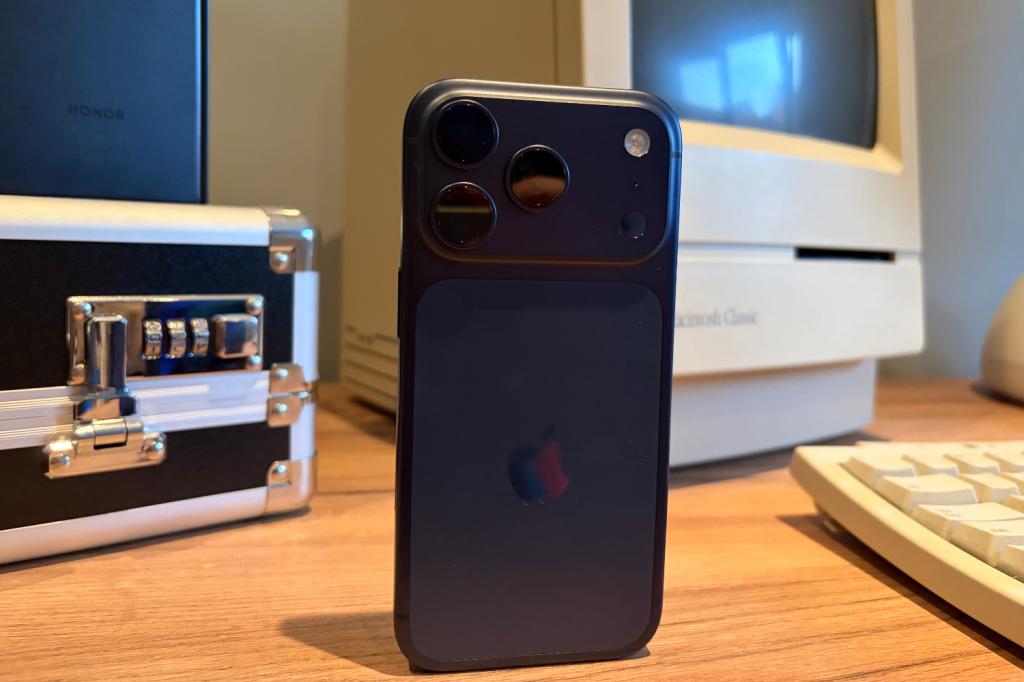

Battery life here is rated for 33 hours of video, and I’ve been seeing around 7 to 8 hours of screen-on time depending on what I’m doing. Apple’s software efficiency is still second to none. Also, worth flagging: you get USB 3 transfer speeds through the USB-C port. If you move lots of ProRes footage or shoot RAW, it makes a difference.
Overall, the iPhone 17 Pro is the one for people who want serious performance and cameras, but don’t want to carry a phone that doubles as gym equipment. It’s powerful, compact(ish), and doesn’t skimp.
iPhone 17 Pro Max: my pick of the bunch
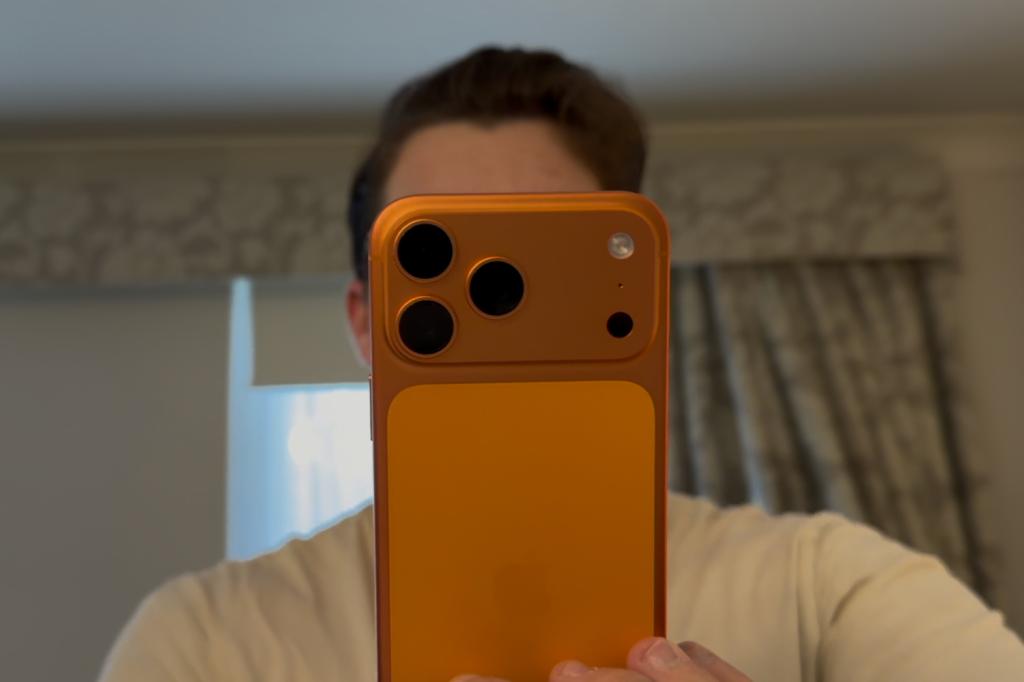

This is the one I’ve personally stuck with. The iPhone 17 Pro Max is, without question, the most complete and capable iPhone Apple’s ever made. It’s massive. It’s heavy. And it’s glorious.
Let’s get the obvious out of the way: the 6.9-inch screen is stunning and makes watching content a dream. The same 120Hz ProMotion display with 3000 nits brightness means everything looks crisp and clean, even outdoors. Paired with an upgraded four-mic array, it’s also the best iPhone for speaker quality. Loud, rich, and it doesn’t distort at high volumes.
But really, it’s the cameras. Like the regular Pro, it can crop in to 8x optical-quality from the new 48MP 4x sensor. On top of that, you get up to 40x digital zoom. And thanks to 3D sensor-shift OIS, those long zoom shots actually turn out usable. You also get ProRAW, ProRes, Genlock, Log 2, spatial video… a full creative suite, basically.
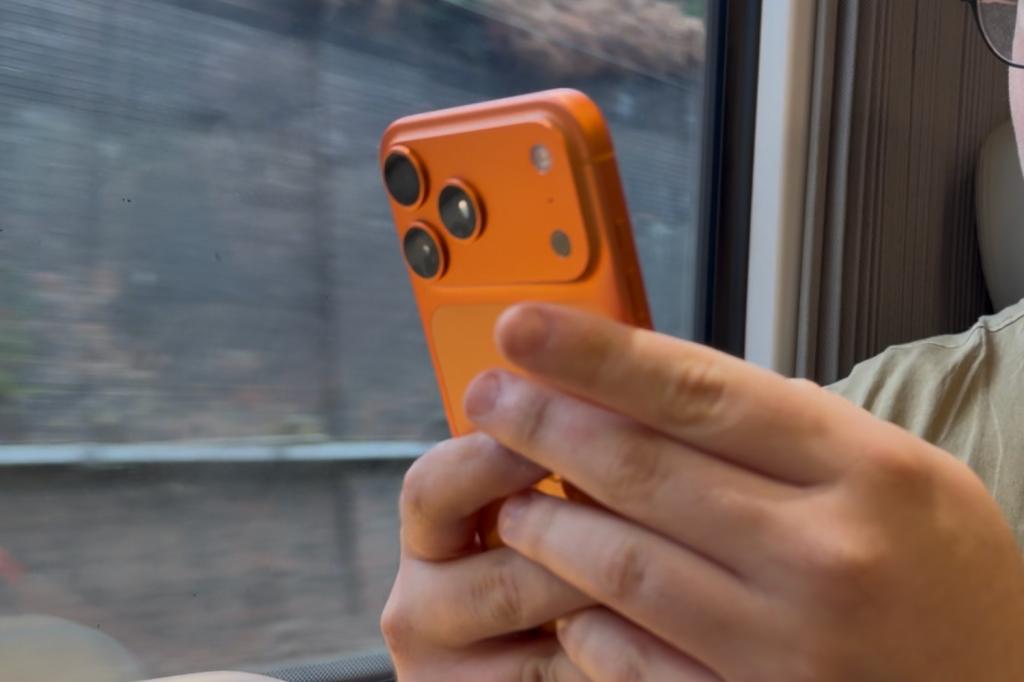

Battery life is ridiculously good. Apple quotes 39 hours of video, and I’ve routinely ended days with between 40% and 50% battery left. That’s while shooting videos, messaging, and watching YouTube far too often. I took this phone on multiple flights and didn’t stress about charging, which is more than I can say for most other phones I’ve used.
Is it perfect? No. It’s a chonker. You feel it in your hand and pocket. And yes, I dropped it once – a clumsy moment that gave me a minor ding in the aluminium – but it didn’t crack or crumble. Honestly, the structural panic around the Pro models feels overblown. It’s sturdy enough for real life.
iPhone Air: a looker with limits
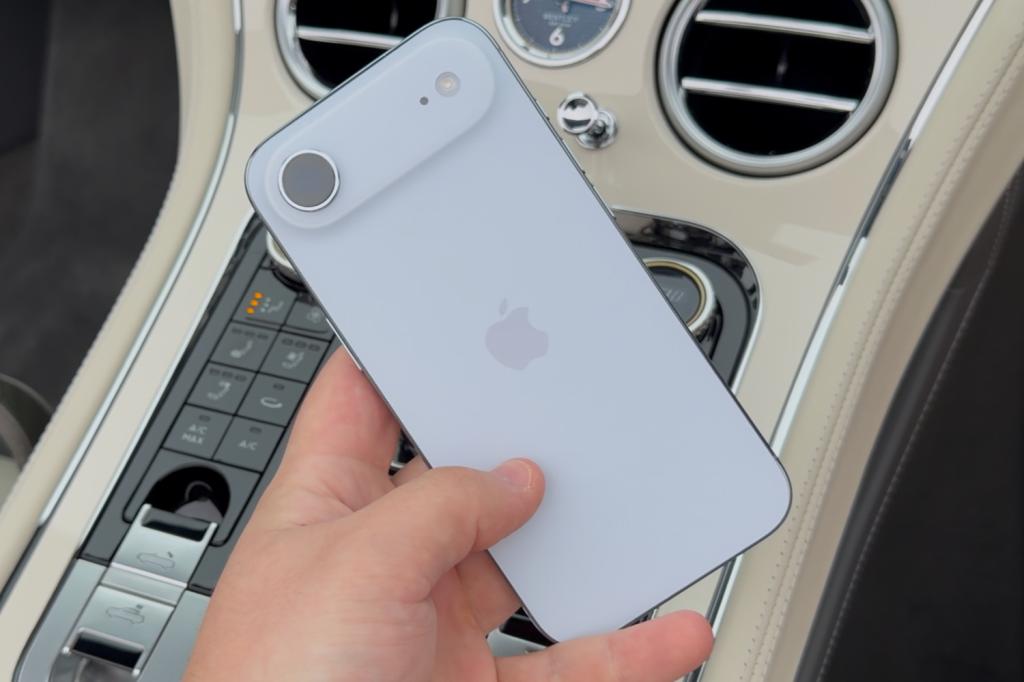

Now onto the wildcard: the iPhone Air. Apple’s newest experiment is ultra-thin luxury. After spending all this time with it, I still haven’t made up my mind whether it’s brilliant or baffling.
Let’s start with the obvious: it’s absurdly thin and light. At 165g, it feels like it’s missing a battery. After years with Pro Max devices, the Air is practically floating in your pocket. It’s got a 6.5-inch display, which is bigger than the regular 17 or 17 Pro, and it still gets that gorgeous ProMotion panel.
The titanium frame is also surprisingly durable. Everyone screamed “bendgate” when Apple announced it, but in practice, this thing is rock solid. No creaks, no flex. I’ve sat with it in a back pocket and it didn’t snap. Plenty of YouTubers have put this thing through all manner of bends and test, which you can go and watch – if that’s your thing.
Battery life, while not as good as the Pros, is far better than I expected. It’s rated for 27 hours of video playback, but I’m not sure it would quite last that long in real life. That said, I’ve routinely made it through the day without reaching for a charger. It’s ended the day on a single digit percent, but I haven’t had to charge it. Don’t expect anything near the Pro Max level, but there’s no cause for alarm either. Heavy users will want the MagSafe battery pack just in case.
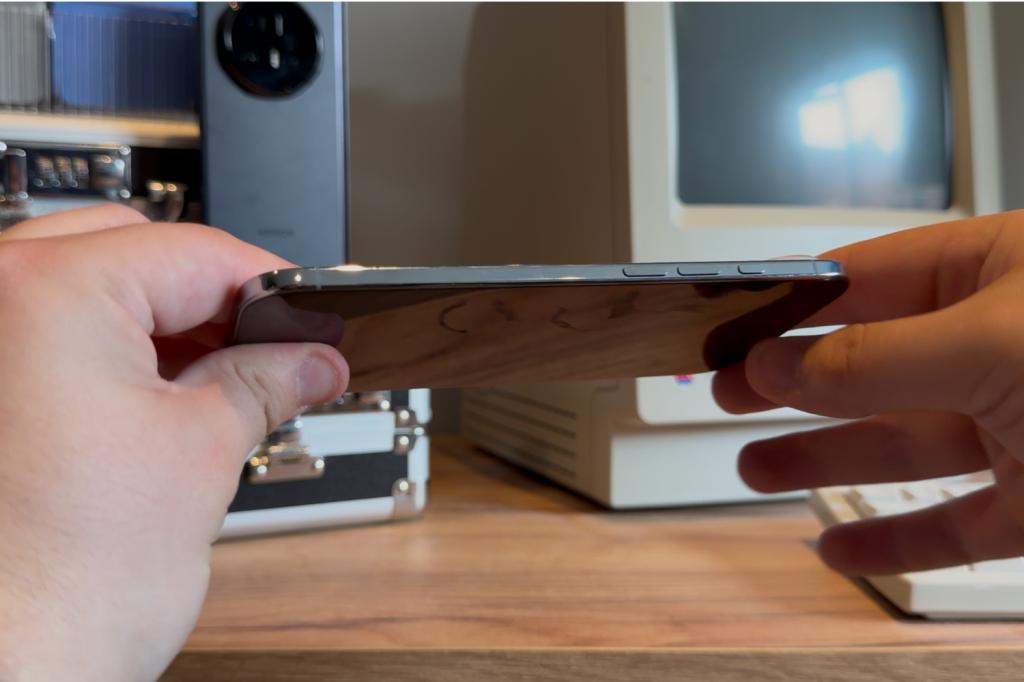

Where it loses points is the camera. You get one lens: a single 48MP sensor with 2x in-sensor crop. That’s it. No ultrawide. No telephoto. No ProRAW, no spatial video, no cinematic mode. It’s a pretty big hit in terms of creative flexibility. If all you do is take selfies and the occasional photo of your pet, it’s fine. But it’s very clearly a lifestyle device, not a creator tool. The photos it does take look great, as this is the same sensor as the other devices. Plus, Apple managed to squeeze the new selfie snapper in the slim device as well.
Performance is slightly throttled, however. It has the A19 Pro chip, but Apple’s disabled a GPU core, likely for thermal reasons. Day-to-day use is still snappy, but don’t expect it to hold up under stress. Long gaming sessions? You’ll see it heat up. And it’s only got USB 2 speeds, which, in 2025, feels like a joke.
Still, there’s something delightful about the Air. It’s the most stylish phone Apple’s ever made. If you prioritise comfort, minimalism, and aesthetic, it might be perfect. Just go in knowing it’s more Bentley than Ferrari.
The verdict: which iPhone 17 model is right for you?
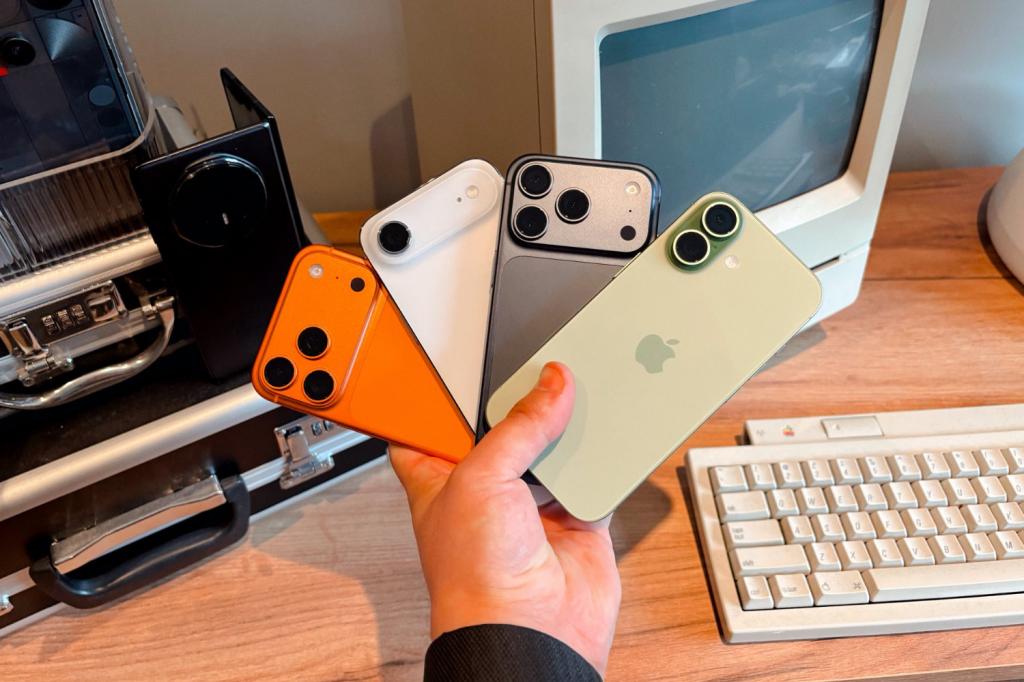

The iPhone 17 is the right answer for most people. It finally delivers on all the basics. You get a ProMotion display, good camera, strong battery – all without making you feel like you cheaped out. It’s Apple’s most no-nonsense upgrade in years.
The iPhone 17 Pro is a sweet spot. All the pro tools, none of the bulk. If you want real camera flexibility and power without the Pro Max’s mass, this is the one to get. But the Pro Max is the power user’s dream. It’s massive, expensive, and slightly ridiculous – but also the most complete device Apple’s ever made.
The iPhone Air? It’s light, gorgeous, surprisingly tough, but not built for heavy lifting. It’s the phone you want to hold, but maybe not the one you need. I wouldn’t discount it, but note that you are paying a premium for style rather than substance.
Whichever one you go for, the good news is that (for once) none of them feel like a compromise. Apple’s finally made a line-up where you can choose an iPhone based on your needs, not on what features are arbitrarily locked away.
